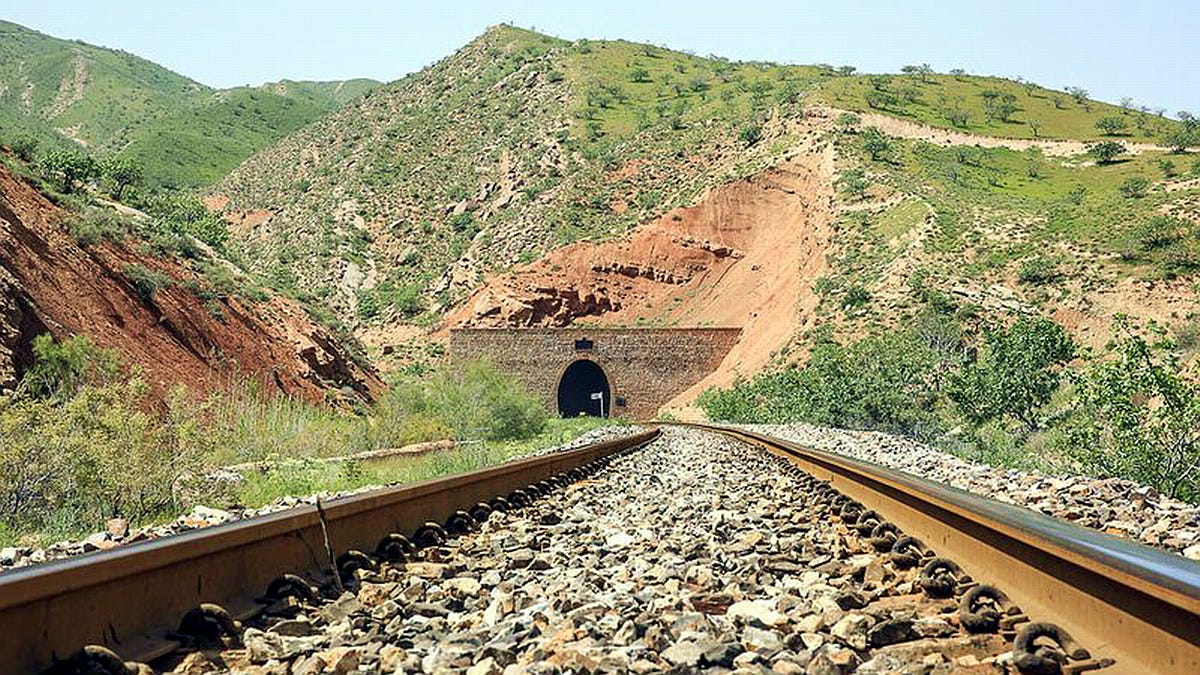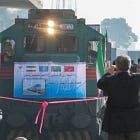China Electrifies Iran’s Railway to Help Prepare for Conflict with Israel
Beijing is securing Iran's supply chain.
On 15 July, Iran and China finalised an agreement to electrify 1,000 kilometres of the Razi–Sarakhs railway line and expand dual-track segments across the network. The rail corridor crosses Iran, linking Türkiye with Turkmenistan. This development follows just two months after the two nations made history with the arrival of the inaugural freight train at the Apadana dry port in Eslamshahr, Iran, from Xi’an, China: a milestone later cited as igniting the 12-day Iran-Israel war. The expansion will accelerate container transit across Iran, further securing Tehran’s supply chain in preparation for another potential confrontation with Israel.
China: Wartime Ally
Sino-Iranian ties have been accelerating at top speed in the wake of intensified tensions in the Middle East. China is involved in infrastructure and Belt and Road Initiative projects in the Islamic Republic. It has made major investments in the oil, gas, and petrochemical sectors under a 25-year cooperation programme worth up to $400 billion. Additionally, Beijing has been reportedly arming Iran with drones, missile components, and precursor materials for ballistic missiles.
Tehran's cooperation with China and fellow BRICS member Russia is to be thanked for its resilience in the face of Israel's attack. Although Iran mainly relied on Russian systems like the S-400 air defence batteries, throughout the twelve-day war China was in Iran's diplomatic corner with strong condemnations of Israeli aggression. Even post-ceasefire, Beijing reportedly transferred surface-to-air missile systems to Iran, including HQ-9B batteries to bolster its air defences, despite official denials from China.
Securing Supply
The deal between Islamic Republic of Iran Railways and China Railway will see a Chinese company electrify 1,000 kilometres of the Razi–Sarakhs railway line, enhancing Iran's role as a Eurasian logistics hub. The electrification will improve freight speed and capacity, supporting a 260% surge in container volumes reported in the first half of 2025. The initiative also aligns with efforts to bypass maritime chokepoints and reduce transit times for the southern corridor. Building on China’s prior railway projects, such as the 2015 Tehran–Qom–Isfahan high-speed rail and the 2016 Xi’an–Tehran freight train, this project advances Iran’s integration into Eurasian trade networks, potentially increasing trade volumes by 15 million tonnes annually and creating thousands of jobs. However, challenges like differing rail gauges with neighboring countries and the risk of sanctions-related delays could complicate implementation.
As such, the continued fortification of Iran’s transportation infrastructure not only aligns with China’s Belt and Road Initiative and bypasses American sanctions, but effectively secures Iran’s access to critical weapons supplies in the event of more war. By enabling faster and more reliable transport of military and civilian goods across its borders, the railway strengthens Iran’s supply chain resilience, reducing dependence on vulnerable maritime routes like the Strait of Hormuz.
Yet, the project’s high visibility and strategic importance make it a potential target for sabotage or cyberattacks, underscoring the need for robust security—especially given the historic May freight train arrival was cited as a catalyst for the Iran-Israel war.




